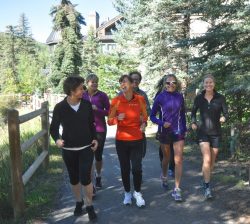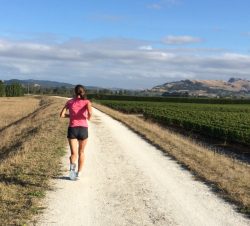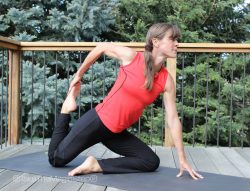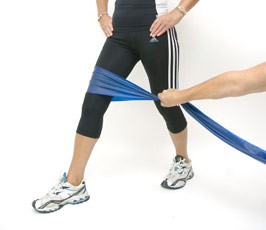How To Prevent Injuries While Running
There is hardly anything more disappointing for an athlete than getting an injury during your fitness routine. It turns your training plan upside down, forcing you to take longer, unwelcome breaks.

Everything is going well. We are running a little faster and farther. Our fitness program is working. Suddenly it happens: an injury brings our training routine to a halt, and it is so frustrating. However there are preventive measures you can take. In this article I discuss how we can enjoy running without injury for a long time.
There are many training methodology and prophylactic options that we can easily incorporate into our running and fitness plan. The most important ones are:
- An individually tailored training program that leads to a well-tolerated improvement of the workload,
- the inclusion of training tools such as stabilization, stretching, yoga and
- regenerative, prophylactic measures.
Running Injury Prevention: Build-up Your Fitness Gently and Gradually

One of the main reasons for injury in sports, especially in running, is a too-rapid build-up of the training load, coupled with insufficient recovery periods. As a result, a slow adaptation of all tissues, tendons, and related, supporting muscles to the workload is not possible, we can no longer keep pace with the stress of training. The progress of increased mileage and intensity cannot be forced. Often it requires several weeks and months. Therefore, in my planning, two aspects of the concept of periodization have always been important in considering my short- and long-term (one- and multi-year) training and racing goals.
- A gentle increase in mileage from one training session with a similar program and from one training week and/or period (and cycle) to the next.
- Making sure that adequate rest is an essential part of periodization, between individual training sessions and periods of weekly, monthly and yearly training development.
For example, two to three weeks of hard, intense training should be followed by one week of lower intensity and reduced mileage to help body and mind recover well enough for the next intense training phase. It is very important to avoid overtraining. Our training provides the necessary stimulus for development, but the real progress actually happens during the resting phase.
Avoid placing more training stress on yourself beyond your current fitness level. Do not overwork yourself. Start each workout with a good feeling, easy and smooth. Run the second half of the chosen distance slightly faster than the first. A warm-up is definitely needed before an intensive workout to make sure the muscles are loose and well prepared. These precautions help you keep the risk of injuries low.
The body needs time to ensure adequate blood flow to all tissues. So start your routine with 10 to 15 minutes of jogging, gradually increasing speed. Right after that, I recommend dynamic exercises in the form of a short runners ABC. This is a progressive drill focused on the biomechanics of running (Agility, Balance, and Coordination). Here is a good example on YouTube. If it is cold, increase the warm-up time.
Please, read the following too: “In Your Base Training Period: Develop Endurance and Strength.“
Stabilization, Yoga, Stretching to Get Into Running Shape Faster

Stabilization, stretching, and yoga not only contribute to more strength and complete fitness, but are especially effective for developing a strong core, stabilizing running technique and ultimately for staying injury-free and maintaining good health.
For body alignment—and especially a smooth interaction of the tendons, ligaments and muscles—specific stabilization and stretching exercises as well as yoga programs are highly recommended. They also lead to an improvement in flexibility and increased blood flow.
A few stabilization exercises two to three times a week are sufficient. Do not under any circumstances stretch muscles that are not warmed up. The best time to perform these exercises is immediately after a short warm-up or after an easy run. Targeted stretches for the Achilles tendon, foot, calf and flexor muscles as well as the lower back area are particularly important for a stable running technique and to prevent hip and back problems.
Prophylactic Measures Help Prevent Running Injuries
As prophylaxis for known weaknesses and minor discomforts that may lead to inflammation, start icing immediately. If in doubt, get some expert advice. Place a reusable cold pack on the affected spot three to four times a day for ten to fifteen minutes. During my running career cool packs of different sizes were my best companions. To this day, they still are—and their application is still routine.
Another insider tip for runners: Foot rolling. Unproblematic, pleasant and possible anywhere, even in front of the TV and when traveling. This is the model I like to use: the wooden roller with a good profile.

In my experience, foot rollers are incredibly helpful for keeping the foot, Achilles tendon and calf injury-free, even when they are under the continuous stress runners can experience. Roll your foot continuously for up to 15 minutes, including the inside and outside edges, to work all the structures. You will get a good massage, plus stretching!

Other prophylactic treatments include baths, sauna and massages.
Listen to the signals of your body. Is that feeling of discomfort normal—or due to excessive training or injury? If you are not sure, do not wait too long before you consult an expert.
And as always: Adequately long and good quality sleep is essential for the recovery and health of the body. The better you include these measures in your plan in addition to running, the more you will be able to enjoy your favorite sport for a long time. Stay injury-free!
Yours,

Adapted from my column “Wie Sie beim Laufen Verletzungen vorbeugen können” in the “WELT” with permission (you can read the article and the entire “WELT” with a daily abo).
*Uta Pippig, 58, is one of the most successful female marathon runners of the ’90s, a three-time champion of the marathons in Boston and Berlin and winner of the NYC Marathon. She is currently a writer and public speaker for “Take The Magic Step®” and “Running to Freedom™” and is also a columnist for the German daily newspaper “WELT.”
Uta lives in Berlin, Germany, and in Boulder, Colorado, and with her organization “Take The Magic Step®” she commits herself to increasing people’s awareness in the areas of fitness, nutrition and health.
Reading Suggestions:
- Listen to Your Body—Stay Healthy and Injury-Free During Your Training
- Yoga for the Right Balance
- Periods of Training for Your Marathon Preparation and Distance Progression for Your Long Runs
- Key Training Principles for the First Build-Up Period of Your Marathon Preparation
- Training Advice for the Second Build-Up Period of Your Marathon Preparation
Updated May 16, 2024
Updated September 9, 2020
- Posted February 28, 2018
© Copyright 2018-2024 Uta Pippig and Take The Magic Step®. All Rights Reserved.



